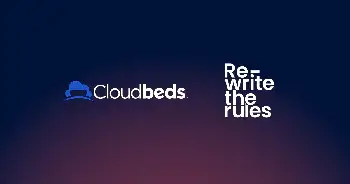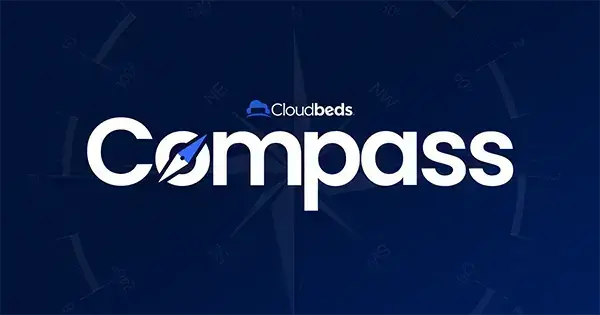Calculate your Property’s TRevPAR
Your Property's TRevPAR is:
What is Total Revenue per Available Room (TRevPAR)?
Move over RevPAR, there’s a new KPI in town. Recently, TRevPAR, which is short for Total Revenue per Available Room, has been gaining recognition as an important measure of success for lodging businesses in the hospitality industry. Why? Because unlike other key performance indicators (KPIs) like RevPAR (revenue per available room), average daily rate (ADR), and occupancy rate, TRevPAR measures total revenue performance for the entire property, not just rooms.
TRevPAR definition
TRevPAR is a measure of the total income generated by a lodging property divided by the number of rooms available for sale within a given time period. Depending on a property’s revenue streams, this may include income from room sales, the restaurant and bar, function space, room service, spa, parking, Wi-Fi, in-room entertainment, activities, and miscellaneous income such as cancellation fees.
What is the difference between TRevPAR & RevPAR?
The key difference between hotel KPIs TRevPAR and RevPAR is TRevPAR measures total hotel revenue, whereas RevPAR measures only
room revenue. While RevPAR is still an important metric, TRevPAR provides lodging operators with a more complete
snapshot of financial performance.
For most accommodation businesses in the hotel industry, room revenue represents the highest proportion of overall
revenue, but that isn’t always the case. For some properties, non-room revenue can represent a substantial portion
of total revenue. For example, a large resort with multiple restaurants, bars, and conference rooms that caters to
locals and travelers staying at other properties and its in-house guests may earn more income from F&B than from
rooms. On the other hand, smaller properties and limited-service hotels may have little or no additional revenue
aside from room revenue.
Note that RevPAR and TRevPAR break down revenue by available rooms, which differs from occupied or sold rooms.
Available rooms refers to the total number of rooms available for sale on the property, including sold, unsold,
occupied, and unoccupied rooms.
Have you checked out Cloudbeds’ free online tools for
calculating your property's RevPAR, occupancy,
and average daily rate(ADR)?
How is TRevPAR calculated?
TRevPAR is calculated by dividing the total net revenue of a property by the total available room nights during a given period. You can pull revenue information from your property’s P&L statement or balance sheet.
TRevPAR formula
TRevPAR = Total Revenue/Total Available Room Nights
Note that total available room nights are calculated by multiplying the number of available rooms on property by
the number of nights in the measured period, such as a month or year.
TRevPAR example
For example, if a 32-room hotel generates $27,250 in room revenue in January, plus $2,820 in breakfast revenue and $760 in
equipment rentals, its total revenue for that month is $30,830. To calculate total available room nights, multiply 32 rooms
by 31 days in January, which equals 992. So the hotel’s Total Revenue per Available Room (TRevPAR) for January would
be $30,830 / 992 = $31.08.
Compare that to the property’s RevPAR, which would be calculated by dividing $27,250 by 992, equal to $28.47. RevPAR
shows how well the hotel generates average rates and occupancy, but it doesn’t show how successful it is at enticing
guests to spend money on onsite services.
Why lodging operators should measure TRevPAR
If hotels wish to grow revenue, in addition to increasing occupancy, they will need to look at other revenue sources outside the guestroom.
TRevPAR provides a key metric for tracking all sources of revenue and taking a more big picture, less room-centric
approach to growing your business.
However, it’s important to note that TRevPAR has limitations of its own. First, it doesn’t take into account hotel
operation costs or profitability. That’s why many hoteliers also use GOPPAR (gross operating profit per available
room) as a key performance metric. GOPPAR factors in total revenue and operating costs to measure a property’s
operating profit by room.
And second, while it’s relatively easy to compare rates and availability with competitors using
revenue management software,
data on total spend on property isn’t as readily available. However, companies like
STR and HotStats now make this data available to subscribers, allowing them to benchmark RevPAR, TRevPAR, GOPPAR,
and other metrics against their competitive set.
What affects your TRevPAR?
Many factors can influence TRevPAR. Here are a few examples.
- The number of rooms available for sale on property
- The number of rooms sold each night (occupancy)
- The availability of products and services for sale on property
- Pricing for rooms, food & beverage, and ancillary services like parking, retail outlets, and spa
- How much money guests spend on onsite services
- Discounts, promotions, and packages that bundle rooms with other services
- The property’s business or segment mix (leisure, business, group, etc.)
- The property’s channel mix (OTA, direct, wholesale, GDS, etc.)
- External factors such as market demand, economic conditions, weather, and travel disruptions
8 ways hotels can increase TRevPAR
Now that you understand what TRevPAR is, it’s time to find ways to increase it for your independent lodging business,
whether you operate a hotel, inn, hostel, vacation rental, or other type of accommodation.
Here are just a few ideas to help get those creative juices flowing.
- Set TRevPAR objectives. Calculate your TRevPAR for last year and each month of the year. Then set objectives for the coming months and year based on what you feel is reasonable and achievable. Include these objectives in your property’s annual budget and operating plan.
- Share objectives with your team. Employees in guest-facing positions such as front desk, F&B, and retail outlets are often in the position to help your property generate incremental revenue. Consider providing incentives or bonuses for promoting onsite services and reaching revenue targets as part of your revenue management strategy.
- Expand ancillary services. To improve hotel performance, you may need to offer additional products or services for sale. Be creative about ways to generate more guest spend on property, whether it’s offering branded merchandise for sale, repurposing underutilized restaurant or function space as a coworking space during the day, or purchasing recreational equipment to rent out to guests.
- Offer activities and experiences. According to Cloudbed’s 2024 outlook, more travelers will be seeking unique experiences, whether it’s connecting with the local community, venturing out of their comfort zone, or experiencing local culture and cuisine. Work with local activity operators to bundle stays at your property with local experiences and onsite services such as dining, golf, or cooking classes with your chef.
- Offer an upsell program. Provide guests with an opportunity to upgrade their room or order a service or amenity prior to their stay or upon arrival. This can be an effective way to boost TRevPAR and fill premium rooms that might otherwise go empty. Guest communication software and upsell tools can help you streamline and automate these offers.
- Increase your pricing. You may have increased room pricing recently, but have you reviewed pricing for all other property products and services that contribute to your bottom line, such as menus, meeting space rental fees, and parking? These days, consumers expect to pay more for services – provided the quality is there, of course. Perform a competitive survey to ensure your pricing is positioned where it should be compared to similar properties in the area.
- Review your business mix. Calculate TRevPAR for the key market segments your property targets, including leisure travelers, business travelers, group, social, and repeat guests or loyalty members. Which segments drive the highest TRevPAR? You might be surprised. For example, maybe your leisure guests pay lower room rates than your business guests, but if leisure guests spend more in the restaurant and bar and on parking and other services, they might actually be more valuable.
- Review your channel mix. Do the same for your key distribution channels, including OTAs, direct bookings, GDS, wholesale, etc. Which channels drive the highest TRevPAR? They should be your top priority. However, also consider costs when assessing segments and channels. For example, you might find out that OTAs drive higher TRevPAR than direct bookings, but direct bookings are actually more profitable when you factor in guest acquisition costs.

















